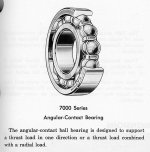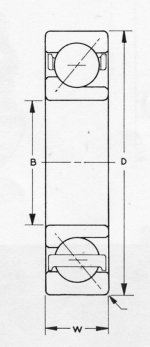woodlandfarms
Super Member
- Joined
- Jul 31, 2006
- Messages
- 6,117
- Location
- Los Angeles / SW Washington
- Tractor
- PowerTrac 1850, Kubota RTV x900
I am working on this whacky idea. It is on paper only at the moment....
Here is the question. Can a pillowblock bearing be put on its side and operate safely. the idea I have involves a shaft that is rotating horizontally with some (100lbs) of weight on it, then tilts vertically, onto its side...
Any thoughts?
Here is the question. Can a pillowblock bearing be put on its side and operate safely. the idea I have involves a shaft that is rotating horizontally with some (100lbs) of weight on it, then tilts vertically, onto its side...
Any thoughts?

